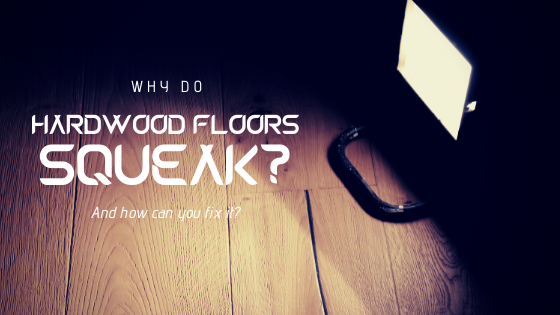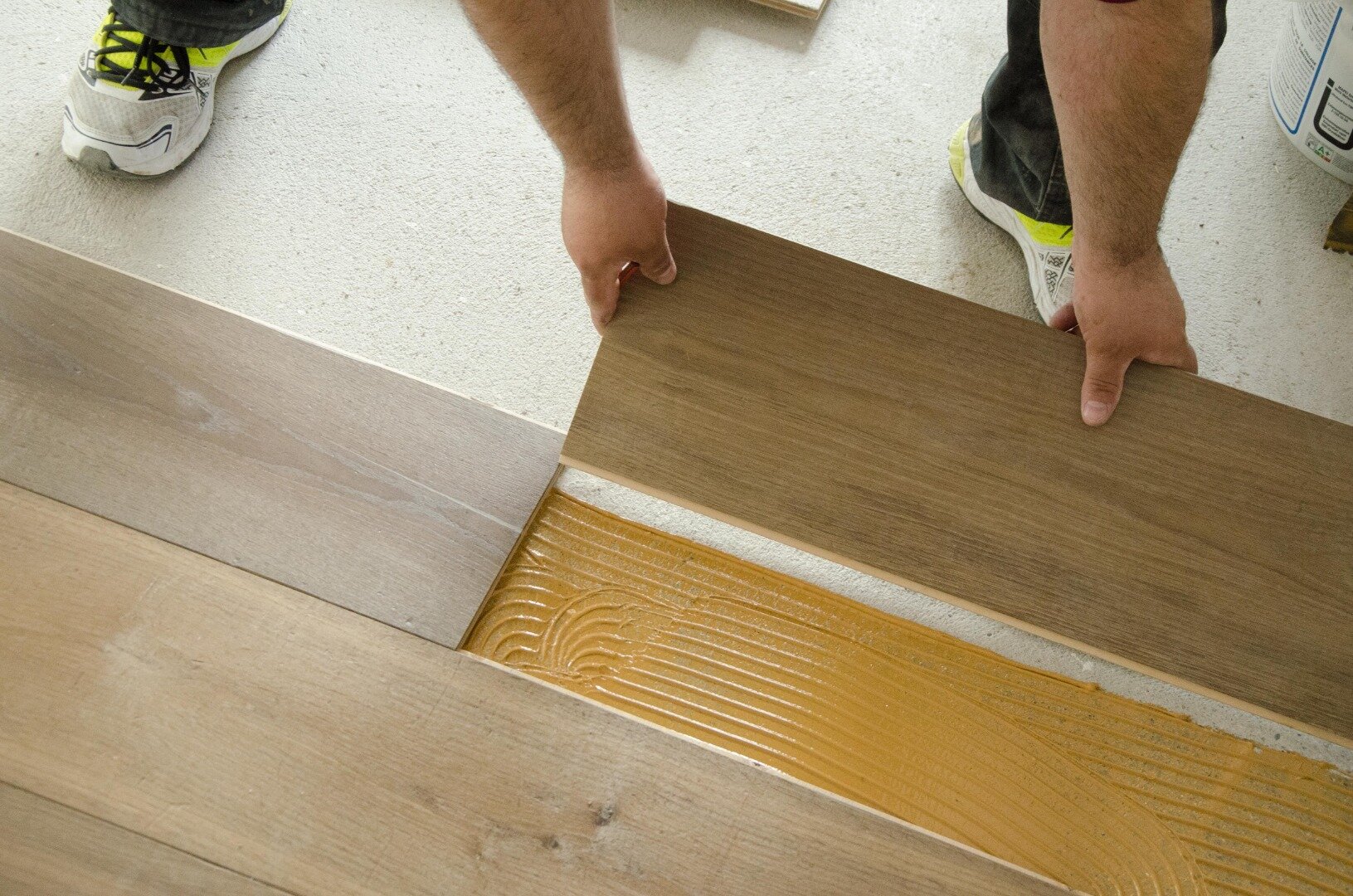Table of Contents:
Nailed Wood Floors
Floating Hardwood Floors
Fully Glued Hardwood Flooring
You Have a Creaky Hardwood Floor - What Now?
Read this article in:
GERMAN
We all know it: the squeaking and creaking of wooden floors. Some of us think it's nice and feel a kind of nostalgia for it. Others can hardly stand the obnoxious and annoying sound.
But why does parquet squeak, and how can you reduce such creaking? In this article, we clarify those questions and more.
Why Does Parquet Squeak?
When a parquet creaks, it has to do with the fact that two or more elements rub against each other under load and generate noise in the process. This noise happens because the wood rubs against nails, walls, or other wooden elements.
It is essential to know that a creaking sound can only occur if there is enough play. In other words: a parquet must be able to move.
If a parquet is entirely (and correctly) glued to the sub-floor, there is hardly any play. So there can be hardly any squeaking or creaking. However, if the wooden flooring has not been glued, it can move around under load and thus rub against other elements.
This begs the question: "Which elements do we mean, and how do you fix a corresponding creak?"
Nailed Wood Floors
The really creaky wooden floors are the ones that are nailed to the subflooring. Such parquets can usually only be found in old houses. They squeak ever so lovely (or hideously) when you walk over them.
This squeaking is caused by the friction of the wood on the fastening nails. The rubbing up and down on the nails while walking generates a sound that gets conducted through the floor and projected into the room and often the neighboring rooms.
The older a nailed wooden floor, the looser its nails get. Thus, creaking usually increases over time. If you're bothered by a creaky parquet floor, there are a few tactics to remedy the situation.
To fixate a floor so that you can't see the nails themselves, you have to nail diagonally through the side of the plank into the subfloor.
Get Rid of the Squeaking Caused by Nails
If the nails are visible on a creaky wooden floor, you can try to grease them up with lubricating oil or graphite to reduce friction. Unfortunately, this only makes sense for very local applications and usually does not last very long. Also, you can't lubricate nails you can't see.
Reducing friction is the only option that you can quickly implement. For the other alternatives below, it is advisable to hire a professional.
The next major operation would be to remove the nails from the afflicted parquet and either replace them with new nails or with screws. Screws require more space, but they prevent annoying creaking almost 100%. This procedure works with both exposed and hidden nails.
Sometimes it is necessary to replace the entire subfloor (also called screed) in order to construct a new sub-structure. Often, the same flooring can then be re-laid on top again. Although this procedure is laborious, the squeaking disappears completely with correct installation.
As a last option, the complete replacement of everything including the screed and parquet can be considered. This saves a lot of effort and is usually the simplest solution to the problem.
Astonishingly, it is also often less expensive than renovating and reusing the old floor covering - albeit less environmentally friendly.
Floating Hardwood Floors
If a parquet was professionally laid floating, the risk of it creaking is quite minuscule, but it can still happen. In such a case, the following may be the cause:
The flooring on which the parquet lays is too uneven. As a result, when walked on, the boards move up and down excessively.
The impact sound insulation that was underlain is too soft and leaves the parquet too much room to move.
Moisture penetrates through the underlay and causes parts of the parquet to dampen and swell. Damp sections between the boards (e.g., tongue and groove) no longer fit perfectly and begin to squeak under pressure and movement.
The room temperature fluctuates too much and causes the planks to shift and warp excessively over time. This creates unequal pressure conditions between the parquet boards, which are shifted by walking loads. These shifts in pressure make a creaky noise.
Floating parquet makes a lot of sense when it comes to reducing footfall noise, especially in the rooms below. You have to consider that a non-anchored / glued-down parquet can creak under load and thus generate a different type of noise (especially room noise), though.
Noise reduction is a good reason to choose sound impact insulation.
The floating installation significantly reduces the sound of foot impact in the rooms below. Unfortunately, it increases room noise in turn, making your footsteps much more audible within the same four walls.
How do you fix the creaking of a floating parquet?
If the cause for the squeaking is the unevenness of the screed, the best thing to do is to have the parquet removed, level the floor underneath, and then put the parquet (or a new one) back on it.
If it creaks because the impact sound insulation is too soft, you have to replace it. In other words: parquet out, replace insulation, then parquet back in.
If it is due to the moisture from the concrete or the lower floors, you must also remove the parquet (and let it dry). But then, you must lay a so-called vapor barrier under the impact sound mat, which retains the moisture from below. You can then spread the wood floor on it again, should the boards have regenerated sufficiently.
If the cause is room temperature fluctuation, you have two options: First, you should ensure that the temperature and humidity no longer fluctuate as much. Second, you would have to install a wooden floor that does not swell and shrink as much under the influence of humidity.
But what should you do if the creaking isn't coming from the parquet itself but rather from the baseboards?
Luckily, this is an infrequent scenario. It usually means that the wooden floor has expanded and is now rubbing against the walls under the skirting boards.
When you step on the afflicted regions, the parquet grates either against the walls or the baseboards. Such grating produces a noise similar to parquet creaking, albeit slightly more dull and scratchy.
If this is the case, all that remains is to either trim the parquet along the edge or to lay an entirely new one.
The first solution is a little unattractive and only really works if you also have baseboards to "cover up the mess". But yes, it is financially more attractive than the second solution.
The latter is the "comme-il-faut" variant that we usually recommend because it rarely brings new complications.
Fully Glued Hardwood Flooring
With fully glued parquet floors, you significantly reduce the risk of creaking noises. Since the boards are firmly glued down to the sub-floor, there is almost no play - even under load.
However, in extremely rare cases, creaking can occur. It then usually has to do with the fact that the floor underneath is uneven or the glue used has become brittle.
A high-quality adhesive lasts longer and prevents many problems in the long term.
In more modern buildings, it rarely happens that a poured foundation (usually with flowing concrete) is uneven. Therefore, squeaking wooden floors are very rare in newer buildings, even if cheaper glue was used.
In old houses, it can very well happen that the subflooring is uneven. Sometimes, this is even strongly the case. In such scenarios, you have to tear out the parquet and lay a new. While doing so, you must level out the subsurface. Otherwise, you are bound to have the same problem again in a few years.
In short, if a parquet is fully glued and still starts creaking, it usually has to be lifted out completely. You should then level the subfloor and glue the new flooring down with a high-quality adhesive.
You Have a Creaky Hardwood Floor - What Now?
As you can see, parquet creaking can have many causes and solutions. You may now be able to determine for yourself which reason is the actual cause in your scenario.
However, if you would like help and advice, we (or your trusted flooring expert) will be happy to assist you. Do not hesitate to contact us, and we will help you reduce those noisy creaks and squeaks so you can finally go to the bathroom again at night without waking up the whole house.
Now, you have not only learned the reasons behind squeaky flooring but learned something about floating and glued parquet floors as well. We will be happy to introduce you to more about this in one of our future articles. Stay tuned for more, and thanks for reading.








